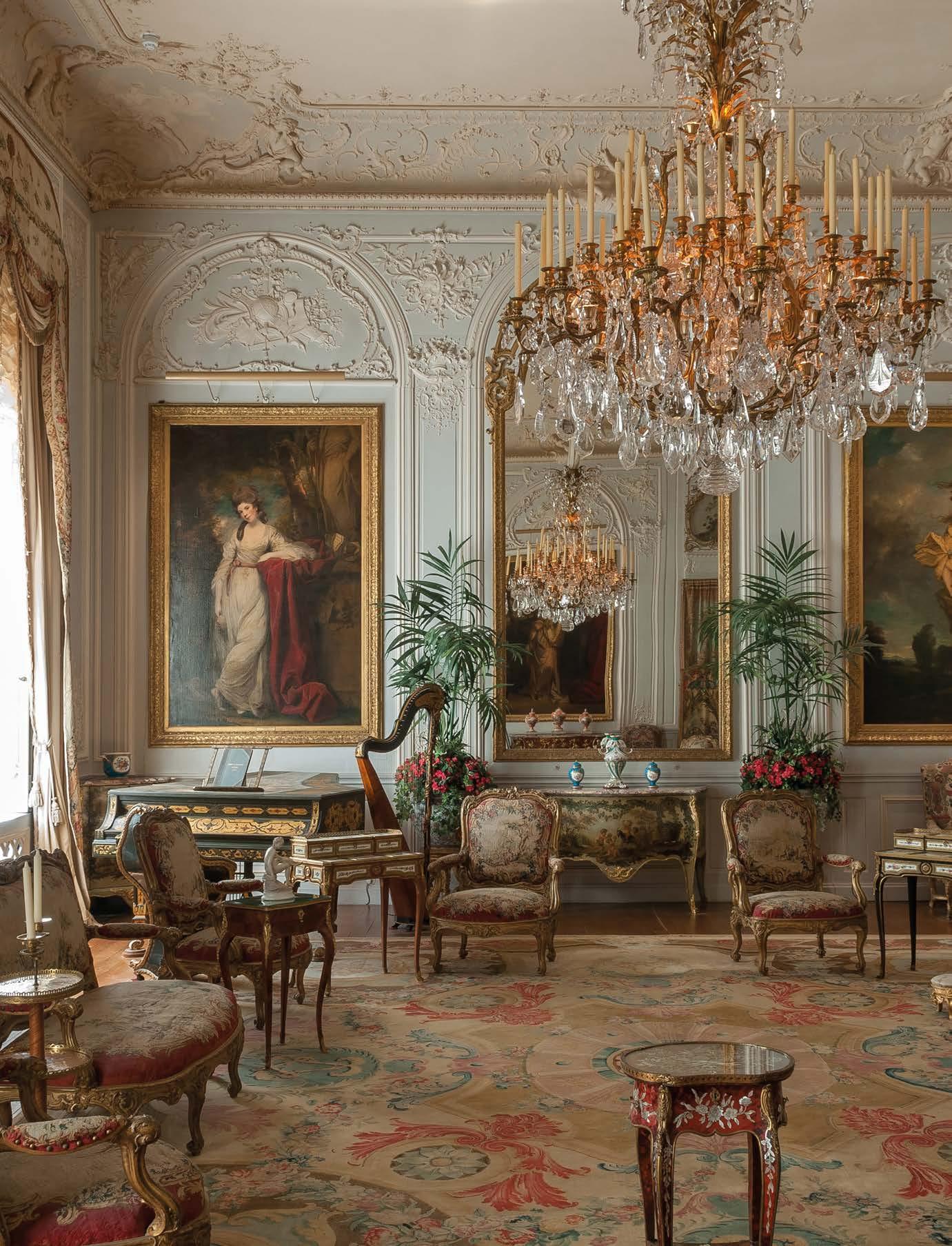
8 minute read
MAGNIFICENT MANOR
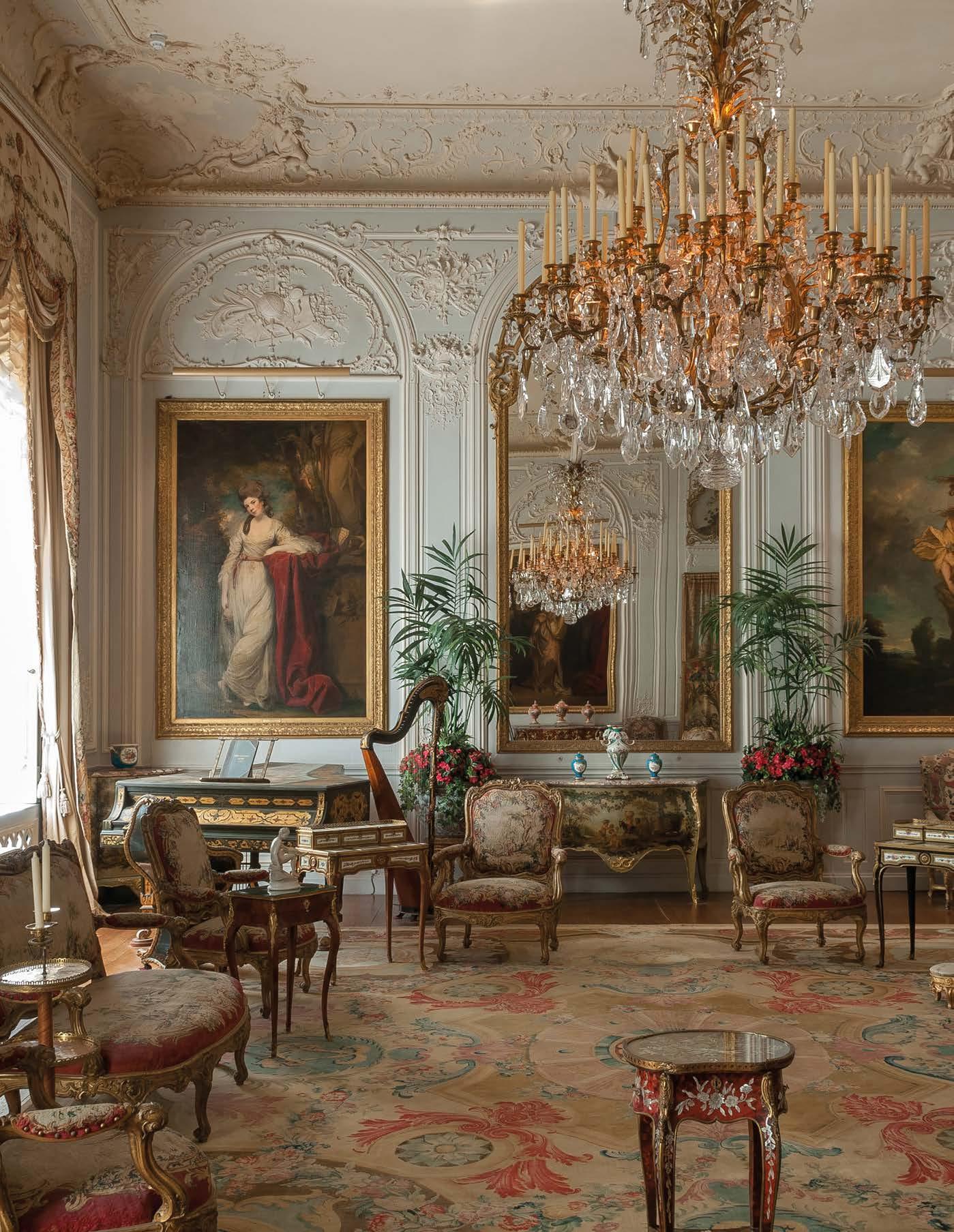
Chiswick House was built in 1729
MAURITIUS IMAGES GMBH/ALAMY © PHOTO: GARDENS/WADDESDON MANOR (NATIONAL TRUST) & MIKE FEAR/WADDESDON, A ROTHSCHILD HOUSE © PHOTOS: BEQUEST OF JAMES DE ROTHSCHILD, 1957, ACC. NO. 2315/WADDESDON IMAGE LIBRARY/HUGO MAERTENS
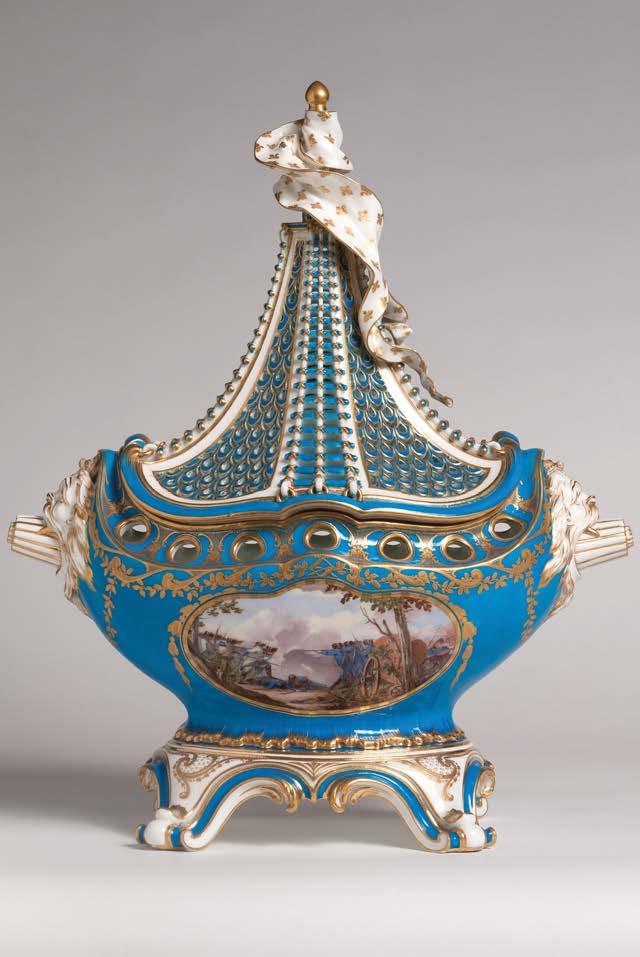
Today a showcase for an extraordinary collection of art and antiques, Waddesdon Manor was once an extravagant party venue to rival any in England
WORDS NEIL JONES

On Saturday July 13, 1889, The Bucks Herald newspaper carried a report on the lavish parties thrown by Baron Ferdinand de Rothschild at Waddesdon Manor: “The genial host has been for many years a widower, and he is never so happy as when his lovely home is full of friends… with the lawns open to them for tennis; the grounds for contemplation, and the art galleries, with their countless treasures of pictures, tapestry, china and curiosities, an opportunity for study such as is rarely afforded outside the museums of the great capitals of Europe.”
Visiting Waddesdon Manor today – it is now managed by the Rothschild Foundation (a family charitable trust) on behalf of the National Trust – is no less an enthralling experience. Built in the style of a French Renaissance château of the Loire, the extravagantly turreted house rises incongruously from the Buckinghamshire countryside like a fairytale palace where something magical awaits.
Baron Ferdinand’s exclusive ‘Saturday to Monday’ summer parties were legendary, bringing together the Victorian social and political elite with European and British royalty. Walking in their footsteps it’s easy to imagine the scenes, not least in the East Gallery where a large 18th-century elephant automaton catches the eye. On his visit in July 1889, the Shah of Persia, rather peeved that the Prince of Wales was not present, sulked in his room but was tempted out by the bejewelled elephant swinging its trunk and rolling its eyes in time to music.
Queen Victoria, intrigued by accounts of the Manor, invited herself for a day in May 1890. The Royal Artillery Band boomed forth in the Conservatory while Her Majesty enjoyed lunch in the Dining Room, including consommé, trout, chicken, quail, two helpings of beef, duckling and asparagus, with little soufflés and ‘Beignets à la Viennoise’ (a sort of fritter) to conclude. “The royal appetite is proverbial”, Ferdinand noted, adding, “the Royal Cook was subsequently sent to learn from mine the secret of making three of the dishes.”
The most frequent royal guest to Waddesdon was the fun-loving Prince of Wales, later King Edward VII, with more than ten visits recorded. In one curious incident, on the morning of July 18, 1898, the Prince fell down the West Stairs, tearing ligaments in his left knee. He was discovered by the Baron’s butler, although some say the royal mistress Daisy Warwick was first on the scene.
Previous page, left to right: The Grey Drawing Room; Sévres porcelain pot-pourri vase, 1762 Clockwise from above: The French-style facade; the White Drawing Room; the Tower Drawing Room; Baron Ferdinand de Rothschild with his pet poodle, Poupon

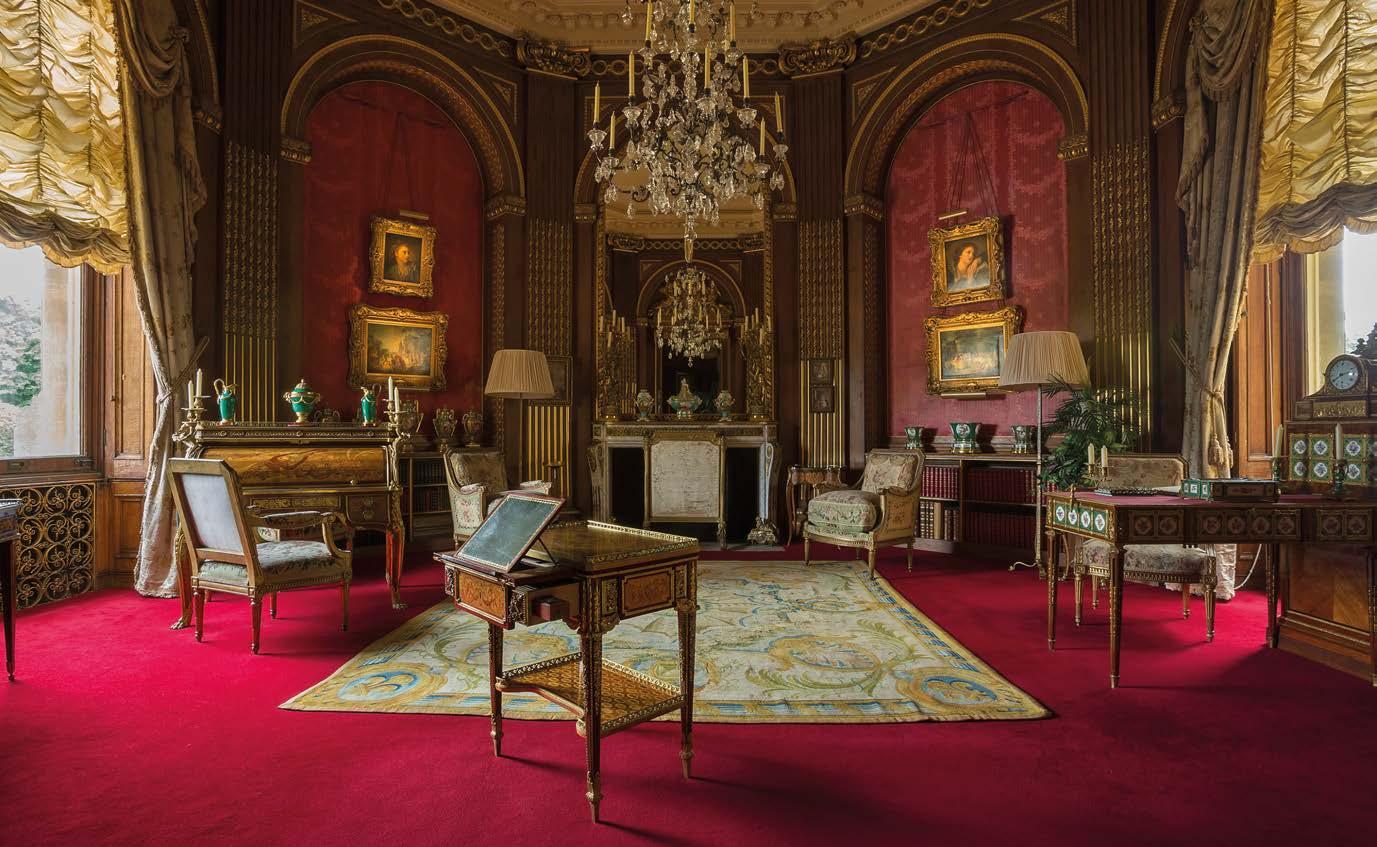
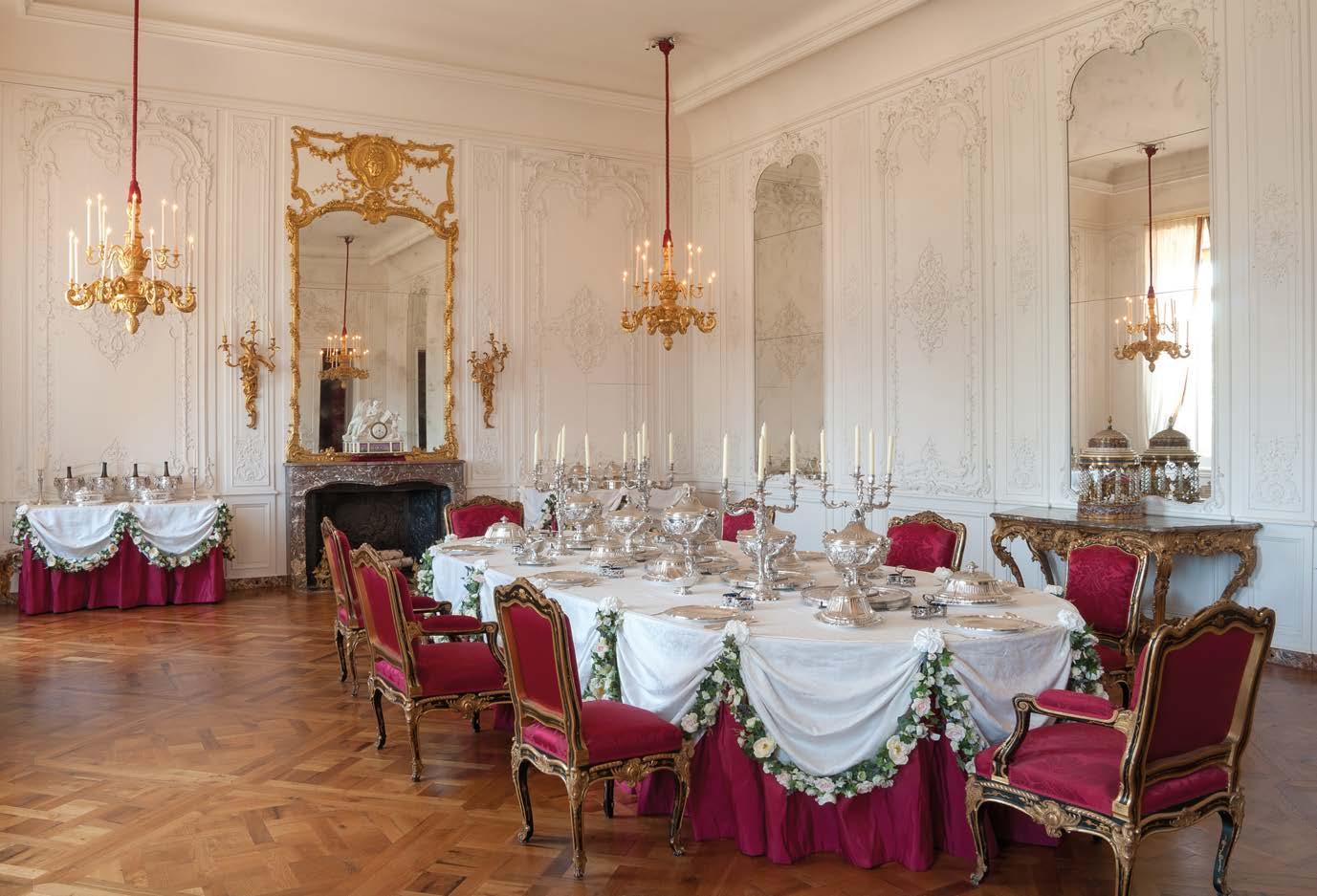
The rise of the Rothschild family had been phenomenal. Working its way up with outstanding business acumen, from Frankfurt’s Jewish ghetto in Germany, it became the most powerful banking dynasty of the 19th century with monarchs and governments alike as customers. The five sons of founder Mayer Amschel would head up family interests in Paris, Naples, Vienna, London and Frankfurt, their tight-knit unity symbolised in their coat-of-arms of a fist holding five arrows.
The family also became renowned as great collectors of fine art and furniture of the highest quality and historical importance. Their style of collecting and interior decoration in the houses they created became known internationally as the ‘goût Rothschild’: Waddesdon Manor, built by Baron Ferdinand, is a rare survivor of that splendour, its collections intact and still growing.
Ferdinand (1839–1898), Mayer Amschel’s great-grandson, was descended from the Viennese and English branches of the family via his father and mother respectively. Settled in England, he married an English cousin, Evelina, in 1865, but tragically she died in childbirth the following year and grief-stricken Ferdinand never married again. Instead he threw himself
into travel and collecting works of art.
In the 1870s Ferdinand bought some farmland with a 600ft hill at its centre in the Aylesbury Vale – an area known at the time as ‘Rothschildshire’ due to the number of family homes there – and he set about building Waddesdon Manor as a country retreat: a “labour of love” where he could house his treasures and entertain friends away from his London home. It was a monumental task. The hilltop was levelled and the mansion constructed, designed by Gabriel-Hippolyte Destailleur to the Baron’s tastes in the style of French Renaissance châteaux. Grounds were landscaped and planted with mature trees.
Visitors today, as in Ferdinand’s time, are dazzled by interiors created using original wall panels from Parisian houses of the 1700s and filled with furniture made for the French royal family, Savonnerie carpets, and tapestries from the royal Gobelins and Beauvais workshops. Baron Ferdinand also had a predilection for
Left to right: The Dining Room; Gainsborough's portrait of Master Francis Nicholls, ‘The Pink Boy’, b.1774

NATIONAL TRUST IMAGES/IAN WARD/WADDESDON (NATIONAL TRUST) BEQUEST OF JAMES DE ROTHSCHILD, 1957, © PHOTOS: ACC. NO. 2508/WADDESDON IMAGE LIBRARY/THE PUBLIC CATALOGUE FOUNDATION UK

For more on the country's stately homes visit www.britainmagazine.com

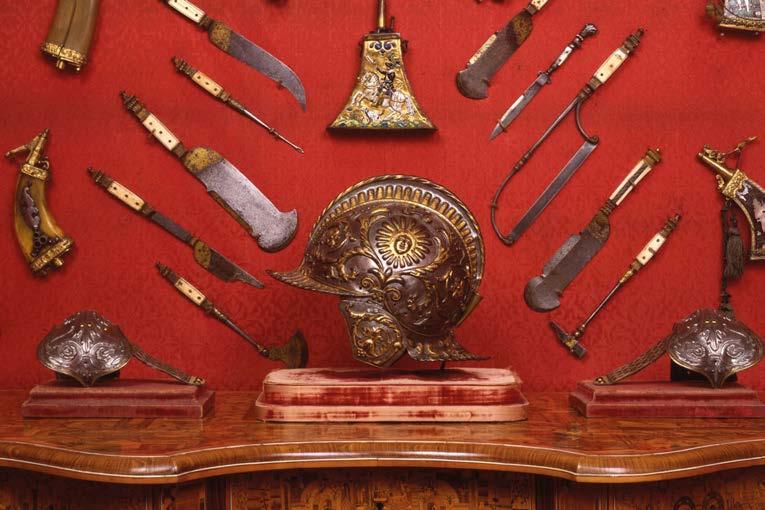
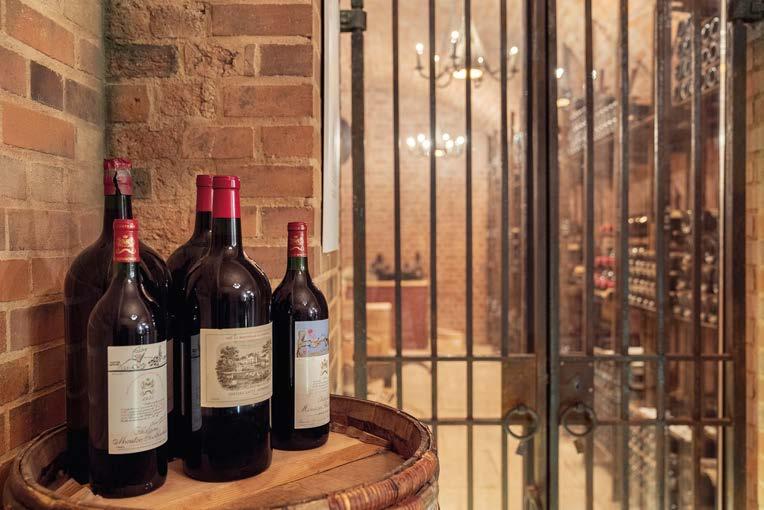
18th-century English portraits like the Gainsboroughs and Reynolds in the Red Drawing Room, and Dutch Old Master paintings in the Morning Room, where guests relaxed over newspapers during their stay.
It was always a highlight of Baron Ferdinand’s ‘Saturday to Monday’ parties to tour the house to admire his “gimcracks” (as he called his treasures). Look out for the rare Sèvres potpourri vase in the shape of a ship (1762) in the Grey Drawing Room, which was Ferdinand’s first important purchase as a collector when he was aged just 21.
Meanwhile, mirrors and marble in the Dining Room evoke a mini Versailles: a glittering setting where guests tucked into sumptuous feasts, though they were sometimes alarmed to see that Ferdinand preferred to dine frugally on just toast and water! The chandeliers and wall lights, electrified before the royal visit of May 1890, fascinated Queen Victoria – one wonders what she would have thought of the ‘Porca Miseria’ (‘Oh my Goodness’ in Italian) chandelier made of broken porcelain and cutlery, commissioned for the Blue Dining Room in 2003 by the present Lord Rothschild, who chairs the Rothschild Foundation and continues to add to collections.
Special mention should be made, too, of Ferdinand’s sister ‘Miss Alice’, whose surprising collection of arms and armour is displayed in the Bachelors’ Wing where male guests smoked and played billiards, and single men were accommodated. Spinster Miss Alice, who often acted as hostess for Ferdinand and inherited Waddesdon after his death in 1898, applied stringent housekeeping rules to protect treasures that even now inform National Trust conservation policies. Waddesdon will be celebrating Miss Alice’s contribution in 2022, the centenary of her death.
Miss Alice was also a passionate gardener and introduced the tradition of 3-D ‘carpet bedding’ planted into the shape of birds. Elsewhere Waddesdon’s gardens are currently undergoing a transition to reinterpret their flamboyant Victorian planting in a more sustainable way, and the restored Aviary takes part in important conservation breeding projects of endangered species.
Towards the end of his life Baron Ferdinand fretted that “Waddesdon will share the fate of most properties whose owners have no descendants, and fall into decay.” He needn’t have worried. Since Waddesdon was bequeathed to the National Trust by Miss Alice’s (childless) great-nephew James in 1957 and has been run on its behalf by the Rothschild Foundation, the house, collections and gardens have enjoyed a new lease of life: welcoming thousands to tour rooms full of fabulous “gimcracks”.
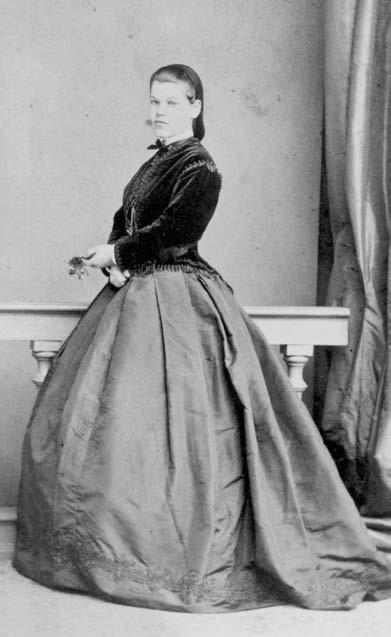
Clockwise, from above: A photograph of Miss Alice de Rothschild, 1860; the Blue Dining Room; Waddesdon's wine cellars; musical automaton by Hubert Martinet, c.1768-72; the Armoury Alcove in the Bachelors' Wing
BOOK AHEAD
TIMES & TICKETS Waddesdon Manor is an easy day-trip from London; trains run from London Marylebone to Aylesbury (1hr); continue by taxi or bus. The house and grounds at Waddesdon Manor are open from Wednesday to Sunday between March and October, and the grounds are open from mid-November to early January. See the website for ticket prices and to book. www.chilternrailways.co.uk; www.waddesdon.org.uk
EAT, DRINK, SLEEP Explore the wine cellars at Waddesdon to find out about famous Rothschild wines, or book a sumptuous afternoon tea featuring the likes of Waddesdon Gin Cured Salmon with Cucumber Gel in the Manor Restaurant. The Five Arrows boutique hotel at the gates of Waddesdon Manor originally accommodated architects and artisans working on the house, and has 16 newly renovated bedrooms, a bar and restaurant. www.fivearrowshotel.co.uk










